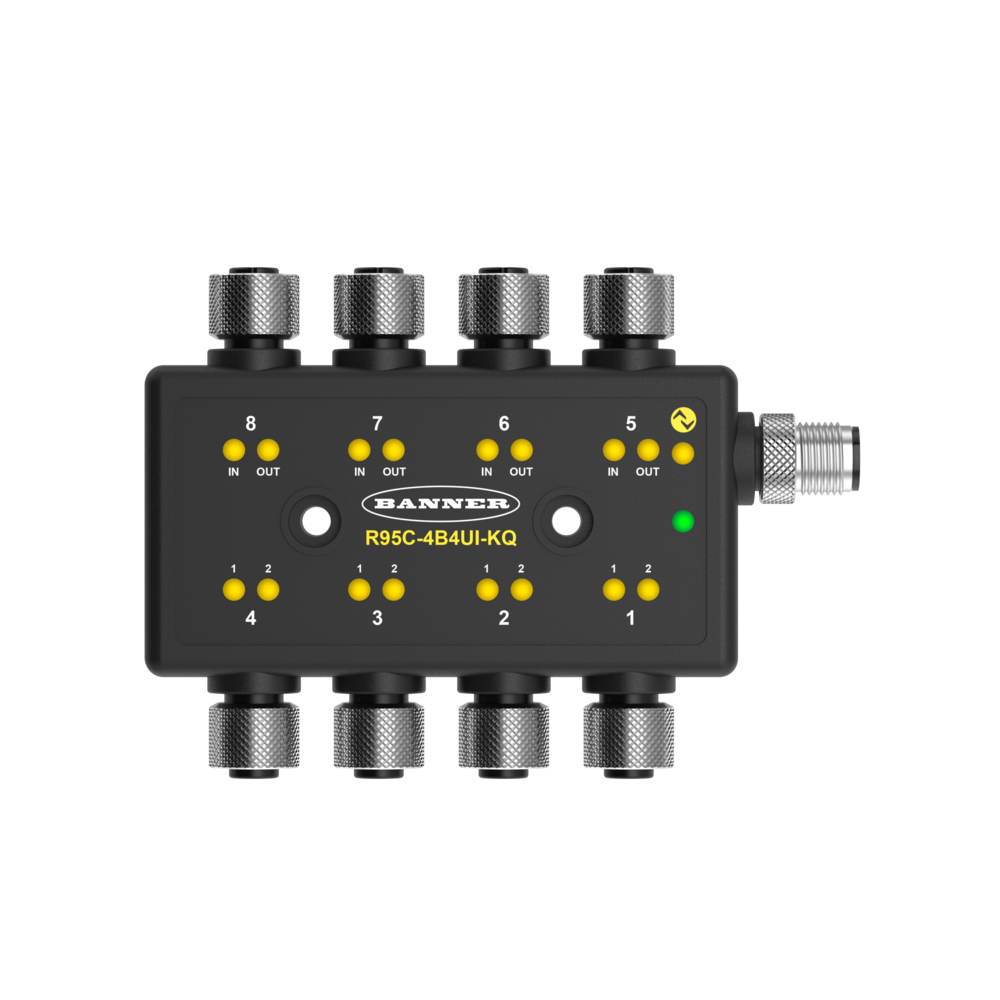-
Company
-
New Products
-
R95C Hybrid IO-Link Hub

R95C Hybrid IO-Link Hub
Design More Efficient Systems with Analog and Discrete I/O in One Device
Controls engineers can more efficiently design remote I/O systems by connecting analog and discrete I/O to a single IO-Link hub. The R95C Hybrid IO-Link Hub reduces cost, wiring, and installation time in applications with a variety of I/O types in one area by offering four analog ports and four discrete ports. Analog signals can be mirrored to other ports for retrofitting existing analog sensors or to add visual indication for efficiency. Up to 4 amps can be shared and passed through ports to power devices, such as lighting, without needing to inject extra power via splitter cables. Convenient side ports help reduce cable damage by minimizing cable bend.
Reduce Cost and Installation Time
The combination of four analog ports and four discrete ports on the R95C reduces cost and installation time, consolidating and sending discrete and analog I/O to an IO-Link system. Using these ports, controls engineers can use the four configurable analog inputs (voltage or current) and four analog outputs, plus eight configurable discrete inputs and outputs (PNP or NPN), for advanced application flexibility. Side ports on the hub reduce costs related to damaged cables by minimizing cable bending and kinking.

Have Greater Flexibility in Machine Design
With its compact, stackable form factor, the R95C can be easily mounted in tight spaces, with multiple hubs mounted on top of each other if needed. This lets machine designers place more hubs and I/O in a smaller space close to sensors, lighting, and other devices. Because the housing is IP67- and IP68-rated, the R95C can be used on machines in challenging conditions rather than mounted elsewhere in a cabinet. Wiring is simplified with M12 QD cables, and in conjunction with visual indication (via block LEDs) on the machine close to sensors, shrinks the control cabinet and allows easier installation.
Improve I/O Efficiency with Multipurpose Ports
The analog and discrete ports on the R95C provide many different I/O options. Port mirroring allows inputs from four analog devices to be mirrored to any of the four analog ports, perfect for retrofitting existing analog sensors for data collection without disrupting existing communication to a controller. Also, inputs from four analog devices can be mirrored as PFM outputs to any of the four discrete ports. This is often used with Banner lighting products which can visually communicate these analog signals, improving efficiency by adding a visual factory element to applications. Lighting products which draw higher currents can share the 4 amps as pass through to any of the ports (pins 1 and 3) with a maximum of 200 milliamps per output (pin 2 or 4). This ability to share more power than other IO-Link hubs on the market provides enough power to lighting products or other higher-draw products without having to inject extra power with splitter cables, keeping the system design neat and clean.
















.psd/jcr:content/renditions/cq5dam.thumbnail.319.319.png)









